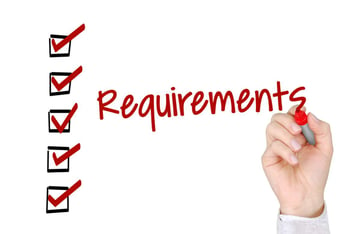The Top 10 Most Important KPIs Property Managers Must Know and Use
Understanding Key Performance Indicators in Property Management
In the world of property management, there are many different metrics that are important to track and understand in order to optimize operations, improve tenant satisfaction, and increase profitability. These metrics are known as Key Performance Indicators or KPIs. By tracking the right KPIs, property managers can gain valuable insight into their properties and make informed decisions based on data.
At VPM Solutions, we have identified the top 10 most important KPIs that every property manager should know and use. In this blog post, we’ll take a closer look at each of these KPIs and how they can help you operate more efficiently and effectively.
Occupancy Rate
The occupancy rate is a key performance indicator (KPI) that measures the percentage of units currently occupied by tenants. This important metric provides valuable insights into the availability of rental units at any given time. A high occupancy rate typically signifies strong demand for your property, indicating its desirability among tenants.
On the other hand, a low occupancy rate may indicate underlying issues with your property that deter potential tenants.
By closely measuring and monitoring the occupancy rate, you can gain a deeper understanding of the market demand and make informed decisions to optimize your property's performance.
Ideal Occupancy Rate
For instance, a good occupancy rate generally ranges between 90% to 95%. This indicates that a substantial proportion of your rental units are occupied, but also allows for a small percentage of vacancies to facilitate tenant turnover and maintenance.
Maintaining an occupancy rate within this range is a positive sign of a property's appeal to tenants, and a balance that enables effective property management. It's important to note that a higher occupancy rate may suggest a higher demand for your rental units, potentially leading to increased rental income.
On the other hand, a lower occupancy rate may indicate a need for targeted marketing strategies or improvements to attract more tenants. Striking the right balance in your occupancy rate ensures a steady stream of income while providing flexibility for necessary maintenance and tenant changes.
Average Length of Stay
The average length of stay, also known as the average duration that tenants typically reside in your rental units before moving out, is a crucial key performance indicator (KPI) that holds significant importance in the property management industry. By tracking and analyzing this metric, you can gain valuable insights into tenant behavior and identify potential issues that might be leading to premature tenant departures.
For instance, if your average length of stay falls below the industry average, it may indicate the need for enhancing the quality of your units or elevating the level of customer service provided. This could involve making necessary improvements, such as upgrading amenities, addressing maintenance concerns promptly, or implementing personalized tenant engagement initiatives.
By delving into these details and proactively addressing any identified shortcomings, you can optimize tenant satisfaction and retention. This not only helps to reduce turnover costs but also boosts your property's reputation, attracting prospective tenants who value long-term residency and positive rental experiences.
Ideal Metric for Average Length of Stay
As a property manager, establishing a benchmark for the average length of stay in your rental properties is crucial for effective planning and management. For residential rental properties, a common average length of stay tends to be around 2 to 3 years, which strikes an optimal balance between tenant stability and turnover.
This duration not only ensures a reliable income stream for landlords but also allows for periodic updates and maintenance of the property. By having tenants stay for this period, property owners can plan and budget for necessary repairs, renovations, or upgrades. It also provides an opportunity to build a long-term relationship with tenants, fostering a sense of community and trust within the property.
Monitoring this metric closely is essential. A significantly shorter average length of stay may raise concerns about tenant satisfaction, indicating the need to address any issues promptly. On the other hand, an unusually long stay could suggest missed opportunities for rent increases or property updates. Regularly assessing and adjusting rental rates and property features can help maximize returns while ensuring tenant satisfaction and property value.
By understanding and managing the average length of stay in rental properties, property managers can make informed decisions, maintain a healthy rental business, and provide a positive experience for both tenants and property owners alike.
Rent Collection Rate
The rent collection rate is a crucial key performance indicator (KPI) that measures the percentage of rent collected on time each month. This KPI serves as an invaluable tool for identifying tenants who may be facing financial challenges and require additional support.
Moreover, it aids in the detection of potential issues within lease agreements or rent collection processes, allowing for proactive measures and improvements to be implemented. Monitoring and analyzing the rent collection rate empowers property owners and managers to make informed decisions and optimize their operations for enhanced financial stability and tenant satisfaction.
Ideal Rent Collection Metric
A proficient rent collection rate is considered to be above 95%. This indicates that the vast majority of tenants are paying their rent on time each month and suggests effective rent collection processes are in place.
However, it's important to remember that even the most well-managed properties may not consistently achieve a 100% collection rate due to factors such as economic shifts or temporary tenant financial hardships. Monitoring this KPI consistently will help identify any potential issues early and enable proactive management to maintain financial stability.
Maintenance Response Time
The maintenance response time is a crucial Key Performance Indicator (KPI) that measures the duration it takes for maintenance requests to be fulfilled. This metric plays a vital role in identifying areas for improvement in your maintenance processes. By analyzing your response time, you can gauge whether you need to consider augmenting your maintenance staff or optimizing your workflows to ensure timely resolutions for all maintenance requirements.
Taking proactive measures to address longer-than-average response times can lead to enhanced operational efficiency and improved customer satisfaction. By identifying the root causes of delays and implementing targeted solutions, such as providing additional training to staff or streamlining communication channels, you can further reduce response times and minimize disruptions to your operations.
A shorter response time can have a positive impact on your overall maintenance strategy. It not only helps in meeting service level agreements but also enhances the perception of your organization's reliability and professionalism. Customers and stakeholders will appreciate the promptness and efficiency with which their maintenance needs are addressed, leading to increased trust and loyalty.
Ideal Metric for Maintenance Response Time
An effective maintenance response time in property management ideally lies within the range of 24 to 48 hours for non-emergency requests. This indicates that the property management team is responsive to tenant needs and able to address and resolve maintenance issues in a timely manner.
For emergency requests, however, the response time should be as immediate as possible - usually within a few hours at most. Consistently achieving these standards not only boosts tenant satisfaction but also reflects positively on the overall operational efficiency of your property management team.
Monitoring this KPI closely can help in identifying bottlenecks in your maintenance process and taking steps to optimize resource allocation and workflow.
Operating Expense Ratio
Operating Expense Ratio (OER) is a key financial metric that reveals the proportion of total revenue allocated to operating expenses annually. This crucial KPI serves as a valuable tool in pinpointing potential areas of overspending, prompting the need for cost-reduction measures. For instance, if your operating expense ratio exceeds the industry average, it may indicate the necessity to engage in negotiations for more favorable service contracts or explore innovative strategies to enhance expense management efficiency.
By delving deeper into the intricacies of the OER, what it is, and how you calculate it, you can gain invaluable insights into optimizing your financial performance and achieving sustainable growth.
Ideal Metric for Operating Expense Ratio
The ideal Operating Expense Ratio (OER) often varies depending on several factors such as location, type of property, and specific market conditions. However, a commonly referenced range for this ratio in the property management industry is typically between the 40% to 60% mark. This suggests that 40% to 60% of the total income of the property is allocated towards operating expenses.
Maintaining an OER within this range indicates that property management is effectively balancing the need to manage costs while still maintaining the quality and value of the property. Consistently tracking and managing the OER is a fundamental step towards achieving financial efficiency and sustainability in property management.
%20over%20US%20dollar%20banknotes%20on%20a%20brown%20background.%20business%20concept.jpg?width=1200&height=800&name=top%20view%20of%20wooden%20blocks%20with%20text%20NOI%20(Net%20Operating%20Income)%20over%20US%20dollar%20banknotes%20on%20a%20brown%20background.%20business%20concept.jpg) Net Operating Income (NOI)
Net Operating Income (NOI)
The net operating income is a crucial financial metric in real estate that represents the revenue generated after deducting all operating expenses. By analyzing the NOI, you can gain insights into your property's profitability and make informed decisions. A higher net operating income generally signifies strong performance, indicating that your property is efficiently generating returns.
Conversely, a lower net operating income might suggest the need for adjustments in operations or rental pricing strategies to improve financial outcomes. Understanding and monitoring this key performance indicator can help you optimize the financial success of your property investment.
Ideal Net Operating Income for Property Management
The ideal net operating income for a property management company can vary greatly depending on a variety of factors such as the size and location of the property, market conditions, and the efficiency of the company's operations. However, as a general rule of thumb, a good NOI is often considered to be one that allows for a capitalization rate (cap rate) between 4% and 10%. This percentage is achieved by dividing the NOI by the property's current market value. A higher cap rate may indicate greater risk, while a lower cap rate can suggest less risk.
Therefore, a property management company should strive for an NOI that results in a cap rate aligning with its risk tolerance and investment objectives. By closely monitoring and optimizing NOI, a property management company can effectively manage risk and maximize profitability
Tenant Satisfaction Score
The tenant satisfaction score is a crucial measure that assesses the level of satisfaction your tenants have with your property and the services you provide. This key performance indicator (KPI) plays a vital role as it enables you to identify specific areas where improvements can be made to enhance customer service and property amenities. By consistently monitoring and tracking your tenant satisfaction score, you gain valuable insights to make informed decisions about enhancing the overall tenant experience and ensuring the retention of your most valued tenants.
Ideal Tenant Satisfaction Score for Property Management
The ideal tenant satisfaction score can vary depending on several factors such as the scale, location, and target demographic of your property. However, a good tenant satisfaction score in the property management industry generally falls between 85% and 95%. Achieving a score within this range indicates that the majority of your tenants are satisfied with the property and services provided. High tenant satisfaction scores not only signify tenant retention and loyalty but also serve as a testament to the quality of your property management operations.
Remember that it's crucial to consistently monitor this metric and address tenant feedback promptly to continually enhance tenant satisfaction and ultimately, the success of your property management endeavors.
Turnover Rate
The turnover rate, also known as the churn rate, is the percentage of units that are vacated each year. This key performance indicator (KPI) is crucial because it allows you to identify specific areas where you may be losing tenants, enabling you to make informed decisions to improve your operations and marketing strategies.
By carefully analyzing the factors that contribute to high turnover, such as rent prices, customer service, and property maintenance, you can implement targeted solutions to reduce vacancy rates and ultimately enhance profitability. Taking a proactive approach to addressing turnover can lead to a more stable and successful rental business.
Ideal Turnover Rate for Property Management
An acceptable turnover rate in the property management industry typically ranges between 25% and 50% annually. This rate indicates a healthy balance between tenant stability and unit availability for new leases. A turnover rate that's too high may suggest dissatisfaction among tenants, leading to higher vacancy rates and reduced rental income. On the contrary, a notably low turnover rate might imply missed opportunities for rent increases or property improvements.
A diligent property management company should consistently monitor this KPI, analyze tenant feedback, and apply strategies to maintain a turnover rate within the ideal range, thereby ensuring sustainable profitability and growth.
Vacancy Rate
The vacancy rate is a key performance indicator (KPI) that measures the percentage of rental units currently vacant. This metric provides valuable insights into the demand for your units and can guide your marketing strategies and rental pricing adjustments. A high vacancy rate suggests a low demand for your units, which may require targeted marketing efforts or rental price reductions.
Conversely, a low vacancy rate indicates strong demand, potentially signaling an opportunity to increase rental prices and maximize profitability. Monitoring and analyzing the vacancy rate can help you make informed decisions to optimize your rental property's performance and profitability.
Ideal Vacancy Rate for Property Management
The ideal vacancy rate for a property management company can vary, depending on several factors such as the size and location of the property, market conditions, and the efficiency of the company's marketing strategies. However, as a general guideline, a vacancy rate of 5% to 10% is often considered healthy in the property management industry. This percentage signifies a balance between unit availability for tenant turnover and maintenance and a consistent stream of rental income. A vacancy rate exceeding this range could indicate an issue with the property's appeal or pricing, whereas a significantly lower vacancy rate could suggest that rental prices might be below market rates.
Tracking and managing the vacancy rate closely can help a property management company optimize its operations and maximize profitability.
 Return of Investment
Return of Investment
Return on Investment (ROI) is a crucial financial metric that measures the profitability of your property investments. It represents the percentage of profit generated from your investment and serves as a key performance indicator (KPI) to evaluate the success of your investment strategies.
By diligently tracking your ROI on a regular basis, you can gain valuable insights into the performance of your investments and make informed decisions about resource allocation and property selection. This data-driven approach empowers you to identify the most profitable avenues and optimize your investment portfolio for maximum returns.
Ideal Return on Investment for Property Management
Determining an ideal Return on Investment (ROI) for a property management company can vary significantly based on a range of factors such as market conditions, the type and location of properties managed, and the company's strategic goals. However, as a general benchmark within the real estate industry, an ROI of around 10% to 12% is often considered good for long-term rentals. This indicates that the company is effectively managing its properties and resources to yield a substantial profit margin. It's critical for a property management company to continuously monitor this KPI, adjusting its operational strategies
In Conclusion: Leveraging KPIs for Successful Property Management
Tracking the right KPIs is essential for ensuring the success of your property management operations. By understanding and using the top 10 most important KPIs, you can optimize your operations, improve tenant satisfaction, and increase profitability. At VPM Solutions, we are dedicated to helping property managers and companies succeed, and we hope that this blog post has provided you with valuable insights and information that will help you achieve your goals.
Want to learn more? Sign up for the most recent course publication in our VPM Academy. Just head to our website, create a free profile, and start learning!
Why VPM Solutions
We are the only comprehensive platform specifically crafted for Property Managers and Real Estate Professionals by Industry Experts. Say goodbye to the limitations of geographic restrictions when it comes to assembling your dream team.
With VPM, you can access a vast network of best-in-class talent from every corner of the globe, ensuring that you have the expertise and resources you need to excel in the ever-evolving real estate landscape. Experience the power of VPM and unlock new possibilities for your property management and real estate ventures.
About VPM Solutions
At VPM, We Solve the Challenge of Finding Great People
-
Our platform is dedicated specifically to the property management and real estate industries and attracts high-quality industry-experienced professionals.
-
Your job posting will be viewed by hundreds of talented Virtual Assistant candidates.
-
Candidates apply directly to your job, and you will be able to invite candidates to apply whose skills match your criteria.
-
Property management virtual assistants and real estate virtual assistants create detailed profiles with their specific skills and experience.






















